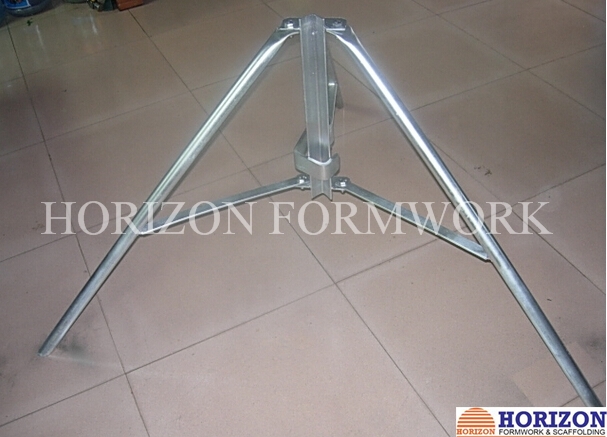12월 . 04, 2024 16:55 Back to list
China's Growing Industrial Scaffolding Market and Its Impact on Construction Trends
The Evolution and Importance of Industrial Scaffolding in China
Scaffolding has long been a critical component in the construction industry, providing the necessary support for building and maintenance work. In China, the industrious growth of cities and infrastructure projects has elevated the demand for scaffolding solutions. As the nation progresses toward modernization, understanding the evolution and importance of industrial scaffolding becomes essential.
Historical Context
China’s rapid industrialization over the past few decades has necessitated significant construction efforts. This burgeoning growth has transformed urban landscapes, turning once small towns into sprawling metropolitan areas. Historically, scaffolding was made from bamboo, a resource abundant in China. Traditional scaffolding provided the needed support for workers but posed safety risks inherent to its material and design.
As construction techniques evolved and the scope of projects expanded, the demand for more durable, reliable scaffolding systems emerged. The transition from bamboo to metal and modular scaffolding systems reflects a significant evolution in construction practices, aimed at enhancing safety and efficiency.
Modern Scaffolding Solutions
Today, China’s scaffolding market is characterized by advanced technological solutions and diverse scaffolding systems. Various materials such as steel and aluminum have largely replaced traditional bamboo, leading to the creation of more robust and safer scaffolding structures. Some common types of scaffolding systems currently used in China include frame scaffolding, modular scaffolding, and system scaffolding.
1. Frame Scaffolding This is perhaps the most widely used type. It consists of panels that are easy to assemble and disassemble. Its flexibility makes it suitable for various applications, from small residential buildings to large industrial projects.
2. Modular Scaffolding Known for its versatility, modular scaffolding allows for customization based on the specific needs of a project. This adaptability is particularly useful in complex environments, such as those found in petrochemical plants or large-scale urban construction.
3. System Scaffolding This type offers a systematic approach to scaffolding, providing a high level of safety and stability. It often incorporates additional safety features, ensuring that workers can perform their tasks with confidence.
Importance of Safety Standards
china industrial scaffolder

The safety of construction workers remains a paramount concern, particularly in an industry known for its physical demands and risk of accidents. In recent years, the Chinese government has implemented stringent safety regulations to safeguard workers on construction sites. These standards ensure that scaffolding systems meet strict requirements, thereby minimizing the risk of accidents.
Companies engaged in scaffolding manufacture and installation are now increasingly investing in safety training and compliance with these regulations. The integration of advanced technologies such as Building Information Modeling (BIM) allows for better planning and execution of scaffolding systems, further reducing risks associated with scaffolding failures.
Economic Implications
The scaffolding industry also plays a vital role in the broader economy. As construction projects multiply, the demand for scaffolding increases, driving growth in manufacturing, rental services, and support industries. This sector supports countless jobs, spanning from skilled laborers to engineers and safety inspectors.
Additionally, the Chinese scaffolding market is increasingly looking towards international standards, fostering a competitive landscape. This shift encourages local manufacturers to innovate and improve their offerings, ensuring that they stay relevant in a global market.
The Future of Scaffolding in China
Looking forward, the scaffolding industry in China appears poised for further growth. With ongoing urbanization, infrastructure development, and the need for retrofit solutions in aging structures, the demand for innovative scaffolding solutions will likely increase.
Moreover, sustainability is becoming a key focus. Eco-friendly materials and practices are gaining traction in the construction industry, prompting scaffolding companies to explore sustainable options that comply with environmental standards.
Conclusion
In conclusion, industrial scaffolding in China plays a pivotal role in shaping the construction landscape. Its evolution from traditional bamboo scaffolding to advanced modular systems showcases the industry’s adaptability and commitment to safety and efficiency. As China continues to modernize and expand its infrastructure, the importance of efficient, safe, and innovative scaffolding solutions will only grow, cementing its position as a cornerstone of the construction sector. The future holds promise for technological advancements and sustainability, ensuring that scaffolding will remain a vital aspect of China’s industrial narrative.
-
Adjustable Heavy Duty Props for Slab Formwork - Strong & Safe Support
NewsAug.22,2025
-
Formwork Spring Clamp Factories: Quality & Bulk Supply
NewsAug.21,2025
-
Premium Ringlock Scaffolding | China Manufacturer & Supplier
NewsAug.19,2025
-
Efficient Table Formwork for Fast Slab Construction & Reusability
NewsAug.18,2025
-
Timber Beam H20 Formwork & Shuttering - Durable & Reliable
NewsAug.17,2025
-
Timber Beam H20: Premium Formwork & Shuttering Solutions
NewsAug.16,2025